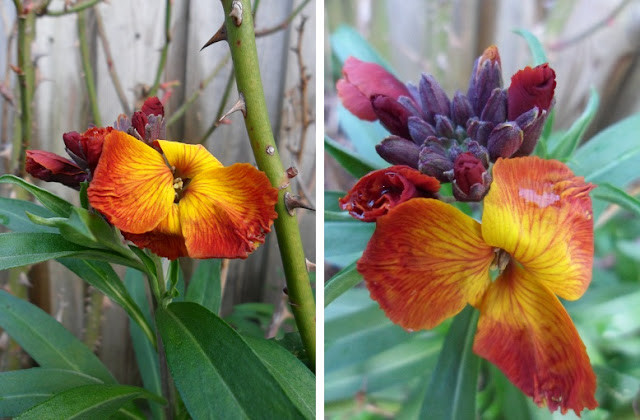In fact last year I cut the leaves too early, allowing me to witness the unbelievable resilience of these plants. The flowers bowed down to the ground, forecasting snowfall a couple of days later, then miraculously rose again when the snow had melted.
 |
| February 2012 |
However, this year they remain au naturel because one of them has been poorly. I wanted to see if allowing the plants to photosynthesise, the way it was intended, would make them healthier; the size of their leaves suggests that.
 |
| February 2013 |
The main reason I cut the
leaves away before is because by February they would appear rather tired and
messy. I didn’t have that excuse this year as the foliage still looks quite
handsome, so I gave myself the challenge of taking some photos to convince
readers to leave their pruners in the shed and just enjoy hellebores in all
their glory.
The stigmas of the flowers are receptive to pollen before they produce their own, in the hope of cross-breeding. The stalks of the flowers are sturdier and shorter than those of the leaves so the flowers stand erect in the midst while the leaves splay out around, their serrated edges tickling the flowers as if trying to pollinate them … or maybe it’s the snails sheltering under the leaves which get the job done, even if it is unintentionally.
Reading advice on caring for hellebores, I probably should have divided this inherited clump a while ago as it’s quite large now, but then I thought that in natural habitats there’s no such division. Maybe I’ll wait for the clump to give me a sign that it needs to be divided, but for now it seems to be content, especially as it kept its leaves this year.
©Copyright 2013 b-a-g. All rights reserved. Content created by b-a-g for http://experiments-with-plants.blogspot.com/2013/02/hellebores-27-feb-2013.html












